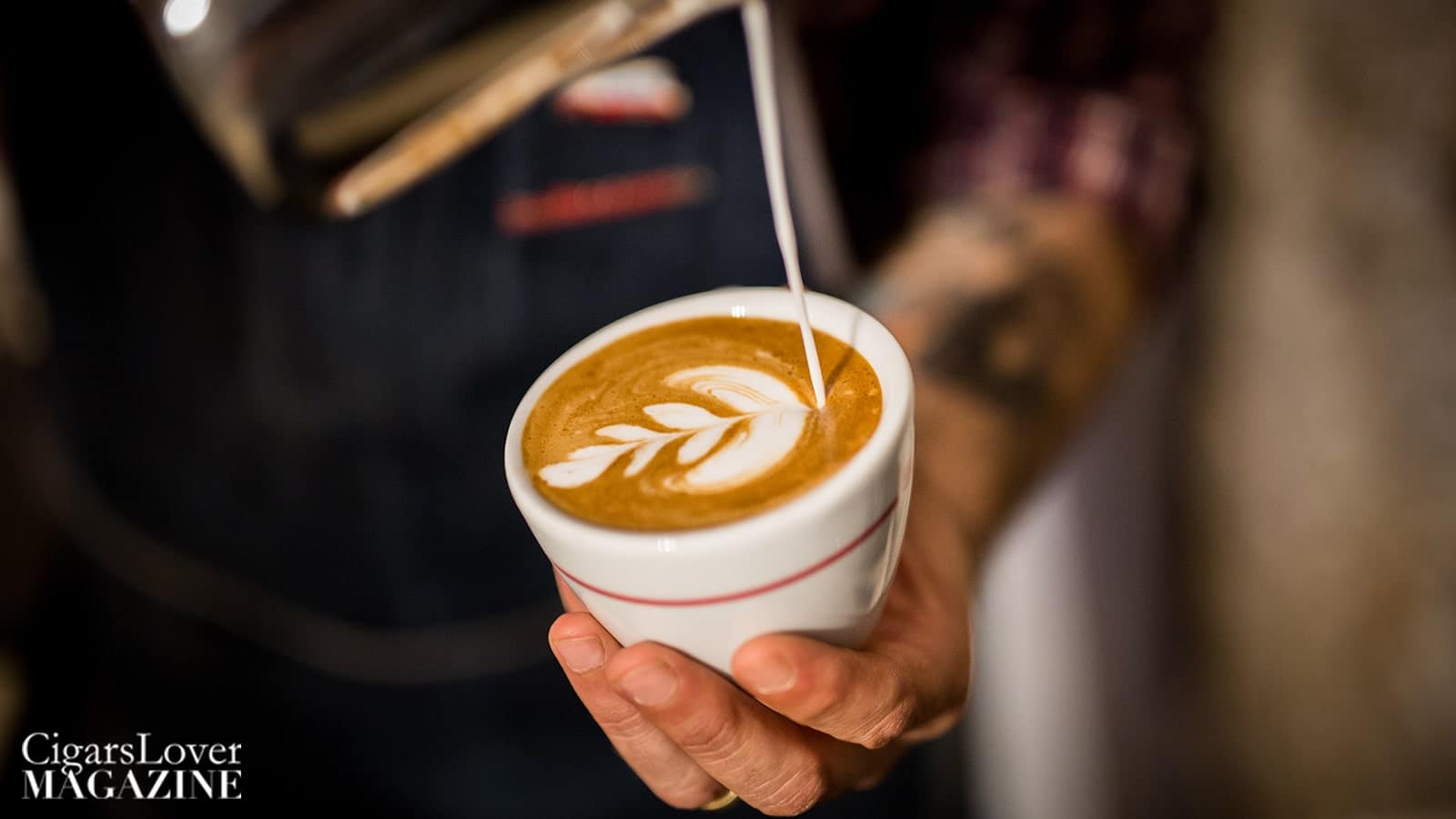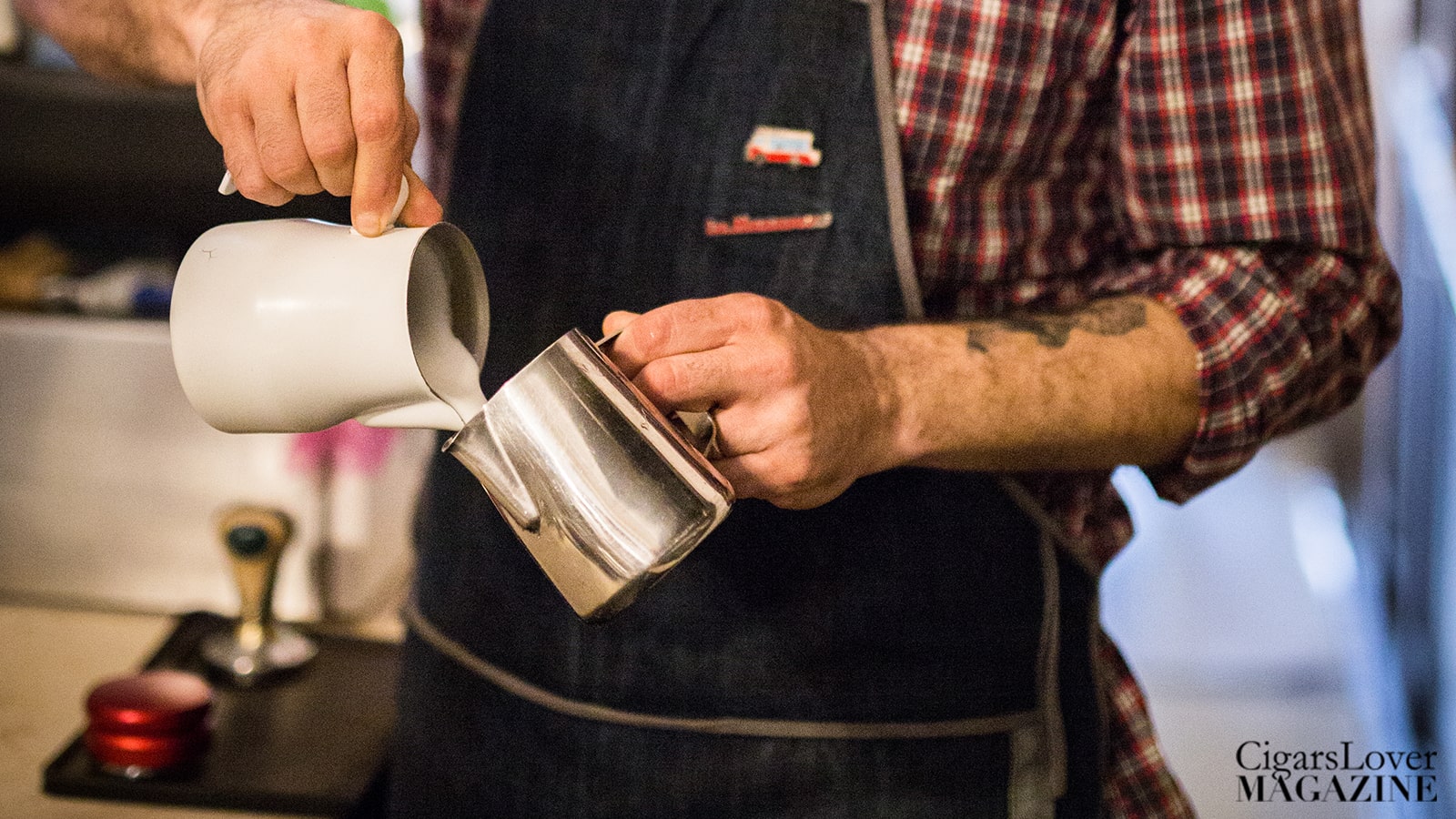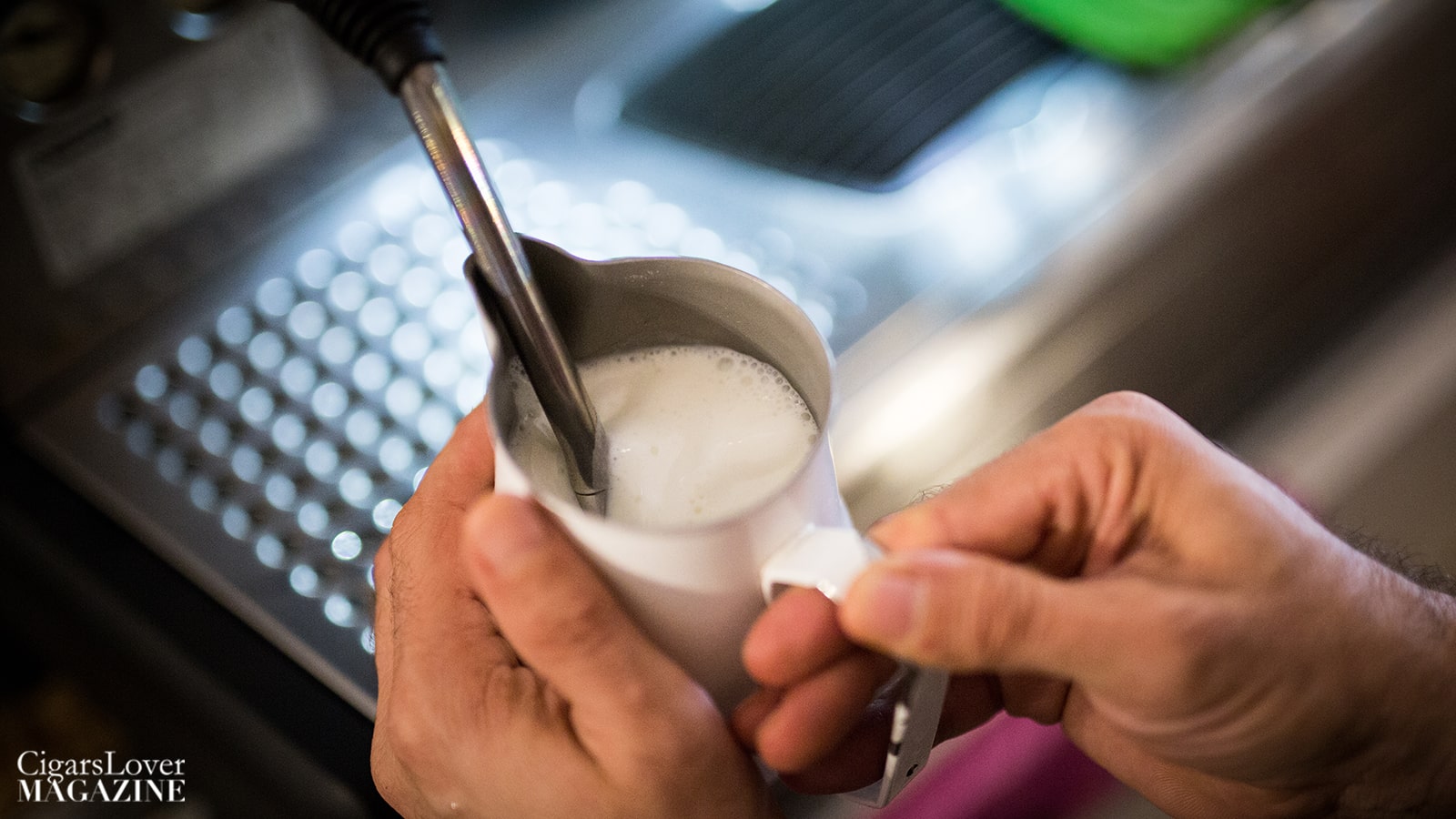
The perfect Italian cappuccino recipe mentions a beverage composed for the fifth part by coffee, two fifths of milk and the last two fifths of foam. The suggested temperature a cappuccino should be served is around 60-65°C, to allow the palate to identify the precious aroma and taste characteristics of the milk-coffee combo. There are stories associated to the birth of cappuccino belonging to XVII century.
In 1683, Wien, in the heart of the Holy Roman Empire, was the scene of an historical important battle, which finished with the defeat of the Arab army. Among the protagonists there was a young spy who, after the battle, was rewarded with some bags of roasted grains, at that time unknown in Europe, which people thought to use as animal feed. After this in Wien a beverage with coffee taste started to be served, something that was a real change. According to the palates experiencing it for the first time, the beverage was intense and bitter; mixing it with milk was capable of making it gentler. Since the milk-added coffee color was reminding the one of the “cappuccini” friars’ tunics, the name “CAPPUCCINO” was given to this new beverage. Wien’s end of XVII century cappuccino was different from the one we know today; the intros of the espresso coffee machine, and of the milk foaming procedure obtaining using the espresso machine steam pressure, make this beverage a real pleasant experience for the palate, not only for the taste, but also for the velvety sensation given by the milk cream, provided a correct preparation technique is used. Today the overall global espresso coffee consumption is often paired with the milk one and, talking about volumes, milk is for sure the most frequently extra ingredient used in the millions cafes around the World. This is the reason why, preparing a Cappuccino, the same attention posed in the coffee selection has to be given also to the milk one.

Milk and coffee are the only two ingredients of a cappuccino. However not all the types of milk are the right ones to prepare a great cappuccino: to obtain a silky, dense, rich texture, sweet milk cream, full-fat milk is to be preferred. The perfect Italian cappuccino recipe mentions a beverage composed for the fifth part by coffee, two fifths of milk and the last two fifths of foam. The suggested temperature a cappuccino should be served is around 60-65°C, to allow the palate to identify the precious aroma and taste characteristics of the milk-coffee combo.
The gold standard recipe follows the “5 Ls” rule (introduced by Franco and Mauro Bazzara), mentioning the five fundamental elements for a great final product: milk, milk jug, steam jet, preparation and art, which in Italian sound “Latte, Lattiera, Lancia vapore, Lavorazione, Latte art”.

Milk (Latte)
The best cappuccino foam, the most compact, shiny, tasty, with the richest texture can be obtained, as said, by quality full-fat milk, with a high percentage of proteins and fats, possibly originating from a small, local production. Italian law defines milk as: “the product obtained by regular, uninterrupted, complete milking procedure of the udders of healthy, properly fed animals”. If no extra info are added, the word milk indicates the cow one; if this is not the case, the animal from which milk is originating has to be indicated: goats, buffalos and so on. The milk is a rather complex food, containing proteins, lipids, sugars, vitamins, minerals and enzymes. In the foaming procedure the amount of proteins allows the creation of the foam itself, while fats allow its stabilization, making it durable in time. For a great result this ingredient has to be processed one time only and the temperature has to be necessarily lower than 70°C. This avoids developing sulhidric acid and caseine tannate, a difficult to digest compound.
Milk Jug (Lattiera)
To obtain a correct milk foaming, a professional dedicated milk jug has to be used, one made of a high thermic conduction material (the expert hand of the barman can make the difference), of tronco-conic shape (to contain milk during the preparation and favor the mixing with air to create the foam). The spout should be narrow and not too pronounced, to control speed, density and the direction where the fluid is poured into the mug. Each number of simultaneous preparations requires its own jug: a small jug to prepare one cappuccino, a medium jug for two cappuccino, a large one for three.
Steam Jet (Lancia Vapore)
The steam jet comes from a dedicated tool belonging to the espresso machine which, when immersed in the milk, allows to incorporate air for the production of a thin texture milk cream. Its maintenance can be critical, too: in addition to a meticulous cleaning (it seems obvious, but it’s not!) it is fundamental to flush it out before and after usage.
Preparation (Lavorazione)
Milk cream is the fundamental ingredient of this drink.
To properly make it, a good dose of experience and professionality is required. As far as the technique is concerned, a good start is the positioning of the steam jet tool. The opening of the tool has to be positioned exactly below milk surface, with a 10-30° inclination of the milk jug, in a position allowing the steam to create a “continuous vortex” movement into the milk. This first phase finishes when milk reaches approx. 37°C temperature. The next step is the emulsion, allowing the largest air bubbles to break into smaller ones, and the beverage to reach the final 65°C temperature.
Art (Latte Art)
Cappuccino can even become art. “Latte Art” is a creative drawing technique, meant to decorate the beverage surface by using a dedicated milk pouring technique into the mug, using the colors contrast between the brown expresso cream and the white foamed milk cream. Italian cappuccino milk foaming has to be thick enough to allow being moved by a small spoon without making the below liquid evident.
Cappuccino is an infinite interpretations beverage. For many it means daily wake-up, an extra stimulus to start the day with the right attitude, maybe paired with a good croissant. Cappuccino can also symbolize conviviality. For many countries consumers, cappuccino is first of all a relaxed and social drink. Entering a coffee shop, one can order a cappuccino to match a good book, a newspaper or to surf the Web. When we are together with friends and colleagues, it is capable of following our discussions. However, it is not only a social drink, rather a very important business, too. For a milk producer, in facts, it represents an important test to evaluate his product quality. Passion, professionality, taste, conviviality, business, beauty. Have you ever imagined all this in a cappuccino mug?

